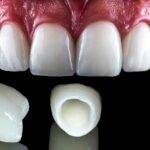Ever wondered what goes into making the sturdy, water-resistant plywood behind your kitchen cabinets, bathroom vanities, or outdoor furniture? The answer lies in a fascinating journey that begins deep in the forest and ends with a beautifully finished sheet of Boiling Water Proof (BWP) plywood.
This isn’t just any plywood — BWP plywood is the gold standard when it comes to strength, durability, and water resistance. But what exactly makes it so unique? Let’s take a behind-the-scenes look at the journey of BWP plywood, from tree to table.
Harvesting the Right Timber
The journey begins in responsibly managed forests, where high-density hardwood trees like Gurjan, Eucalyptus, or Acacia are carefully selected. These trees are known for their strong, dense grain — a key factor in creating durable plywood.
Sustainable forestry practices ensure that for every tree cut, more are planted — making the process eco-friendly and future-forward.
Log Peeling and Core Preparation
Once the logs reach the factory, they are peeled into thin veneers using rotary cutting machines. These veneers form the core of plywood sheets. Each layer is carefully checked for uniformity, thickness, and defects.
Here’s where the magic starts — BWP plywood isn’t just made from wood. It’s engineered for strength, with each core sheet chosen to ensure the final product can handle moisture, pressure, and time.
Bonding with Phenol-Formaldehyde Resin
This is where BWP plywood begins to earn its reputation.
Unlike ordinary plywood, BWP plywood is bonded with phenol-formaldehyde (PF) resin — a waterproof adhesive that holds up even under boiling water conditions. This synthetic resin seeps into the wood fibers, creating a permanent bond that resists water, termites, and delamination.
The result? A plywood sheet that doesn’t just look good but can stand up to steam, spills, and seasons without losing its form or strength.
Hot Pressing Under Intense Pressure
Once the veneers are glued, they are stacked with alternating grain direction to ensure cross-layer strength. These stacks are then hot-pressed at high temperature and pressure — typically around 140°C.
This step not only activates the phenolic resin but also ensures the plywood is:
- Compact
- Gap-free
- Strong enough to bear heavy loads
The combination of high-quality timber and industrial-strength adhesive makes BWP plywood exceptionally resilient.
Conditioning, Trimming, and Sanding
After pressing, the sheets go through a conditioning period, allowing them to stabilize and settle. Then comes the trimming and sanding, where the plywood is cut to size and smoothened for a flawless finish.
At this stage, every sheet is tested for moisture content, bonding strength, and boiling water resistance — ensuring it meets IS:710 standards, the Indian benchmark for marine-grade plywood.
Finishing Touches and Customization
BWP plywood isn’t just functional — it’s also flexible in design. Depending on where it will be used, it can be:
- Laminated
- Varnished
- Painted
- Textured with natural or engineered veneers
This means you can use BWP plywood anywhere — kitchens, bathrooms, balconies, even outdoor furniture — without compromising on aesthetics.
What Makes BWP Plywood Unique?
- Waterproof Core: Can withstand boiling water for hours without delamination
- Termite & Borer Resistant: Thanks to the treatment of both wood and glue
- High Structural Strength: Ideal for load-bearing applications
- Long Life Span: Designed to last for decades
- Versatile Use: Suitable for interiors, exteriors, and humid environments
Final Thoughts: A Material That’s Built to Last
From its origins in the forest to the final finish in your home, BWP plywood is crafted with care, engineered with precision, and designed to perform. It’s not just another building material — it’s a long-term investment in quality, safety, and peace of mind.
So next time you’re planning a kitchen, bathroom, or outdoor deck, remember: behind every beautiful, long-lasting surface is a journey — and BWP plywood is the strong, silent hero that made it all possible.






